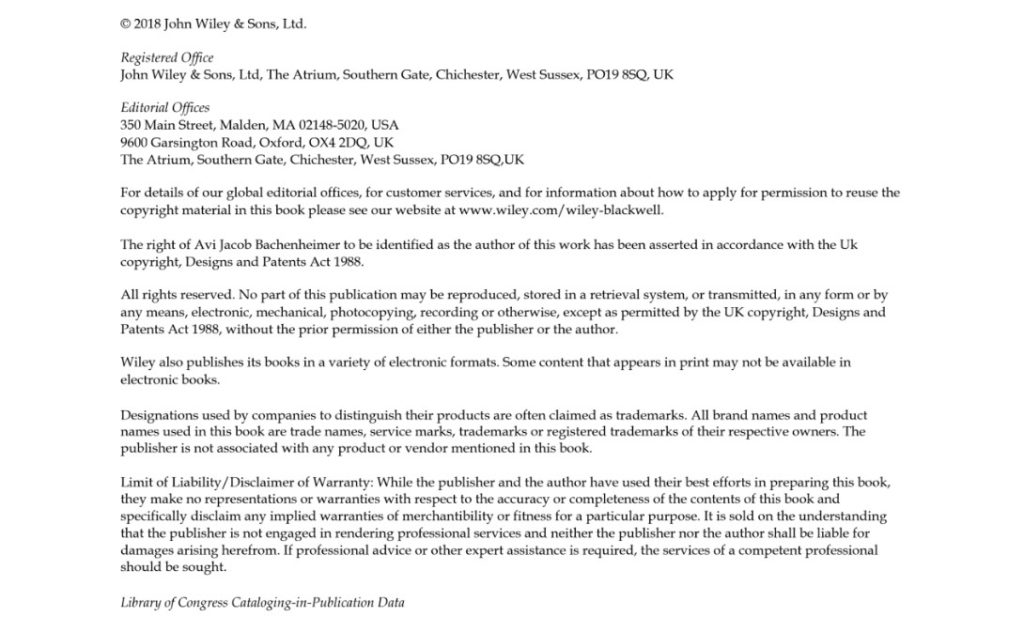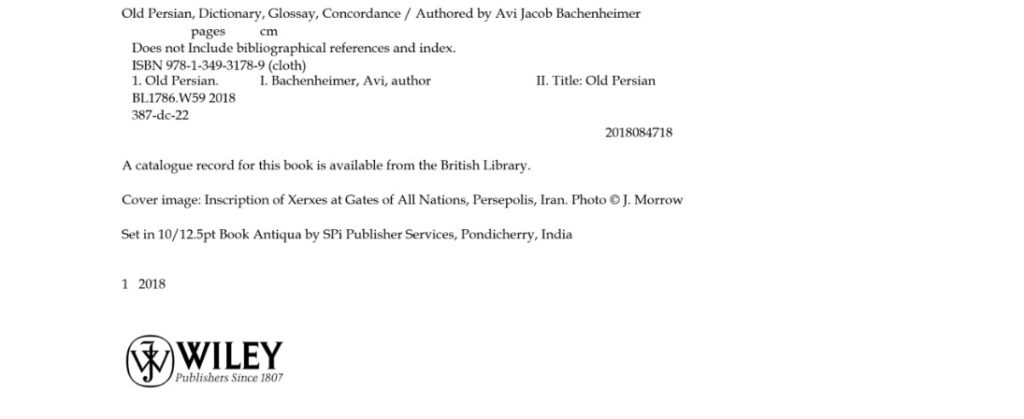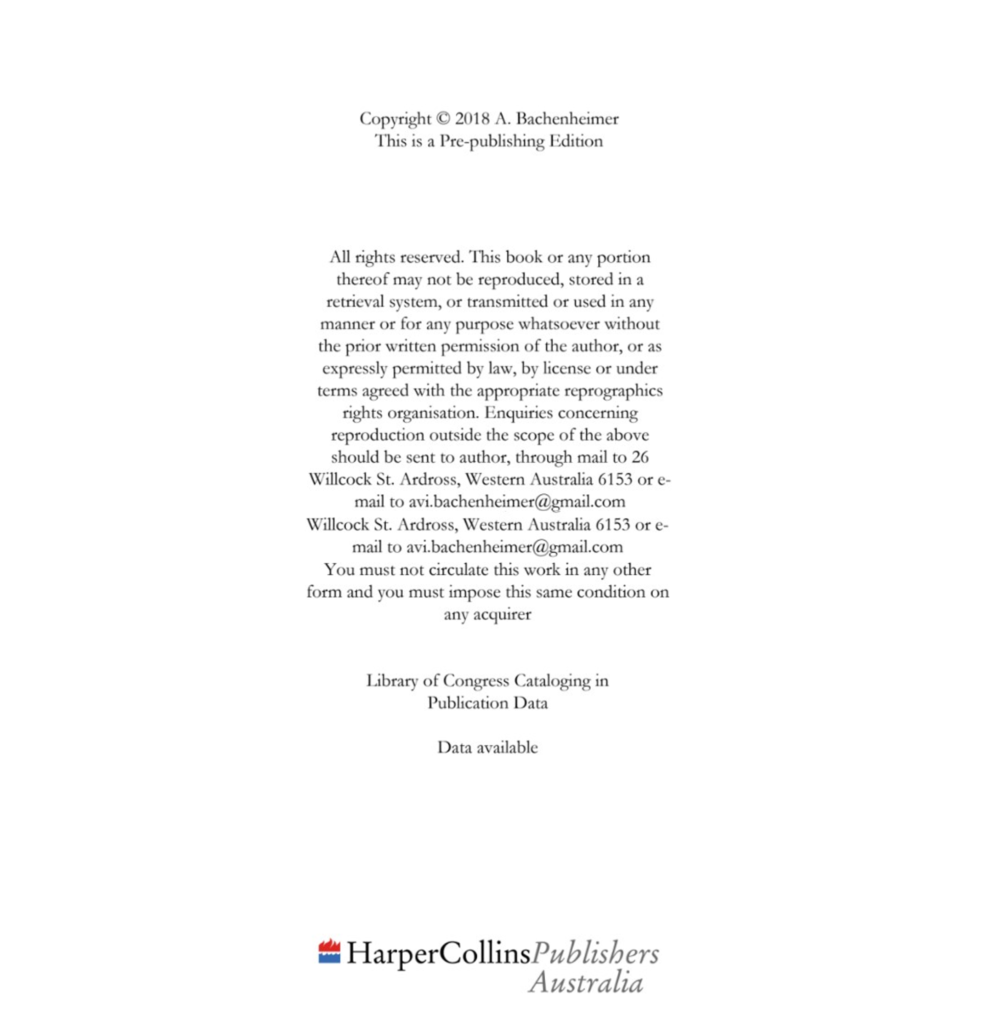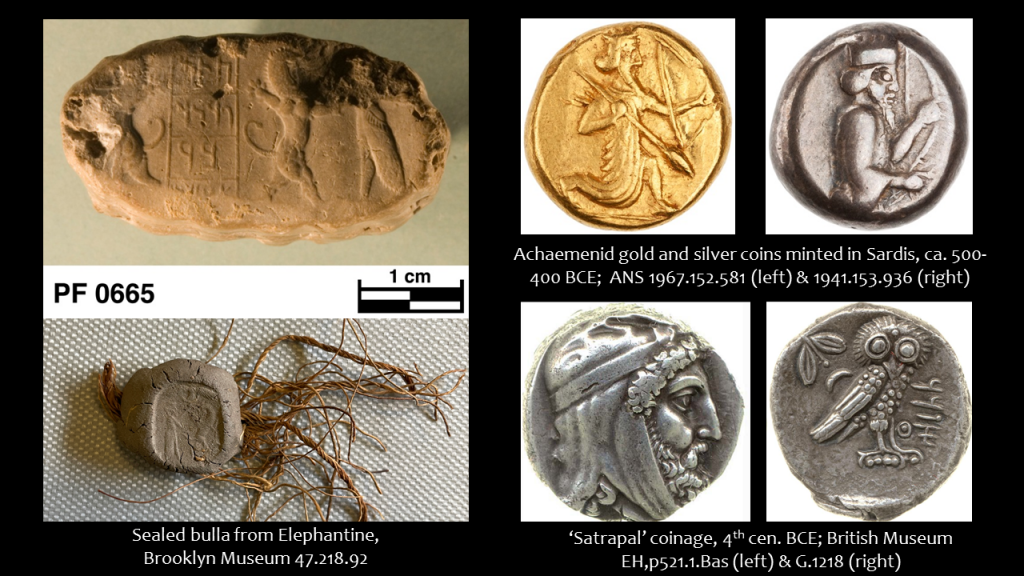This fall I will have yet another email address, this time at Hofstra University. I’ll be teaching Culture & Expression, a massive team-taught course in the Honors College, which includes features humanities scholars and social scientists talking about a very wide range of texts (and some art too). The schedule is still in progress, but I would like to note that the dean of the Honors College is still looking for one more teacher, and he would like a classical philologist. Anyone interested in this opportunity should feel free to contact me, and I will put you in touch with the dean.
A New Old Persian Forgery
Recently I discovered a new Old Persian forgery. I do not mean a forged Old Persian inscription, although these certainly do exist, and one can consult Rüdiger Schmitt’s indispensable book Pseudo-Altpersische Inschriften (Österreichischen Akademie der Wissenschaften, 2007) on this subject. My discovery is a forgery of rather a different kind. I was on the Wikipedia page for Cyrus the Great the other day (I was trying to figure out how Cyrus’ name is pronounced in modern Persian), where I saw the following citation: Bachenheimer, Avi (2018). Old Persian: Dictionary, Glossary and Concordance. Wiley and Sons. pp. 1–799. The link on the site took me to Google Books, where I found the expected limited preview.
At first I was very pleased as this discovery, since an English language Old Persian dictionary would be most welcome. There is, of course, already an invaluable German dictionary by Prof. Schmitt, Wörterbuch der altpersischen Königsinschriften (Reichert Verlag, 2014), but the advantage of a dictionary published by Wiley is easy online access. Accordingly, I set out to find this new dictionary. I started with the Michigan and NYU library catalogs, but, curiously, I came up empty. I then checked the Wiley website and found nothing. On Worldcat, I found the following:

I also found it on Amazon, which gave the publisher as ‘Independently published.’ I therefore returned to Google Books to check the copyright page on the preview, which appeared at first glance to be legitimate:


At this point I adopted a new tact, and sought more information about this purportedly dictionary’s author, Avi Bachenheimer. His web presence is fairly robust, with his first search result being an Academia.edu page giving his affiliation as the University of Western Australia. However, the page lists him as an alumnus of the university. It gives a second affiliation with the Central Institute of Technology, a former TAFE institution (not unlike an American community college) in Perth, which was absorbed into North Metropolitan TAFE in 2016.
On his Academia page Mr. Bachenheimer lists eight papers, fifteen books, and one book review. This immediately raised my hackles. Even the most prolific scholars are unlikely to produce fifteen books in the course of their careers, whereas Mr. Bachenheimer’s date of birth (according to Google) is 1985. A second suspicious aspect is the range of topics covered by these supposed books; titles include Aspects of Free Market System in the Indian Ocean Trade, Words of Persia – A Dictionary of Persian, Arabic and Hebrew Loanwords in Swahili, On Chomsky: Philosophy of Mind and Language and The Jangali Movement and The Soviet Socialist Republic of Gilan. It is very unlikely for any single scholar to have sufficiently broad knowledge to publish scholarship of this breadth. Indeed, a brief glance at any of the ‘books’ on the site reveals their fairly obvious homemade character, most overtly in the use of double-spacing!
The papers on Mr. Bachenheimer’s page were similarly suspect. Most had disclaimers indicating they were pre-publication versions (which are often posted publicly by scholars), but none provided actual publication details. One of the papers I checked listed his title and affiliation as ‘Lecturer in Near Eastern Linguistics, Research Centre Institute for the Study of Ancient Iranian Society and Culture, Western Australia.’ As I was unfamiliar with this entity, I turned to Google once more and, lo and behold! It exists – sort of. The website appears professional enough, announcing many research projects and publications, providing a contact form, information about membership and even a donation link. But there were no names (or pictures) of individual people, except for one: Avi Bachenheimer.
For example, a news link on the main page reports ‘The Discovery of Achaemenid Royal Road’ by ‘archaeologists from the Institute for the Study of Ancient Iranian Society and Culture’ led by none other than Mr. Bachenheimer himself, who is quoted in the article. The ‘discovery’ is itself patently absurd. There are two blurry photos of an arid landscape with a stone-lined trail, which, according to the image captions, is 150 to 180 cm wide, that is, narrower than many modern sidewalks. Given the extensive bureaucratic infrastructure that supported the royal road, it is highly unlikely that it consisted merely of a narrow dirt path, especially in the heartland of the empire! In other words, this is clearly not the work of a trained archaeologist, as any attempt to publish such a find in a peer-reviewed venue would be flatly rejected.
To return to Mr. Bachenheimer’s dictionary, it is clearly not published by Wiley and is therefore a forgery. Someone has evidently doctored a copyright page for it and chosen fonts in keeping with Wiley’s in-house style. I have no idea whether Mr. Bachenheimer himself or a third party is responsible for this forgery. Indeed, one of the dangers of self-publication is that even if a work is copyrighted without a corporate legal team it can be very difficult to protect that copyright. However, this dictionary is not the only one of Mr. Bachenheimer’s publications that purports to be a published work. Google Books also has his A Critique from the Left – Book Review: Shashi Tharoor, Inglorious Empire, What the British Did to India. Despite obviously being a book review (albeit of extraordinary length), the copyright page, which indicates that it is a pre-publication text, includes a HarperCollins Australia logo.

This is much clumsier than the Wiley forgery, but I have found it cited on at least one other page.
To be fair, I got to the bottom of this little mystery after about twenty minutes of late-night Googling. But I am an experienced skeptic with an expensive education; others are not so lucky. The citation of this work on Wikipedia is bound to contribute to its wider use, despite it having no scholarly value. I say this not because the dictionary is flawed in some way – I don’t know if it is, because I have not read it. And I will not read it, because it is not peer-reviewed. This book perfectly illustrates the dangers of uncritical internet research, against which (in vain it seems) I frequently caution my students. In calling out this book as the forgery it is, I hope to warn off any poor soul who may stumble across it, and I have attempted to inform Wiley of this (doubtless unsanctioned) use of their trademark (although I am not certain their customer service chatbot was bright enough to understand me).
Addendum: A human employee of Wiley contacted me later in the day to confirm that my message had been received and thanking me for informing them of this, er, creative use of their brand.
Now on to Toronto
Having just returned from the Dura-Europos conference in New Haven, I am now preparing for my next one, in Toronto on Saturday, where I and the other participants will be present in spirit but not in body. It is the Third Annual Debates in Archaeology Symposium, hosted by the Archaeology Centre, on The Archaeology of Captivating Technology: Making, Wonder, and Power in Material Perspective. My talk is entitled “Imperial Captivation: Seals, Coins and Power in the Achaemenid Empire.” As preview, I give you one of my more visually compelling slides:

